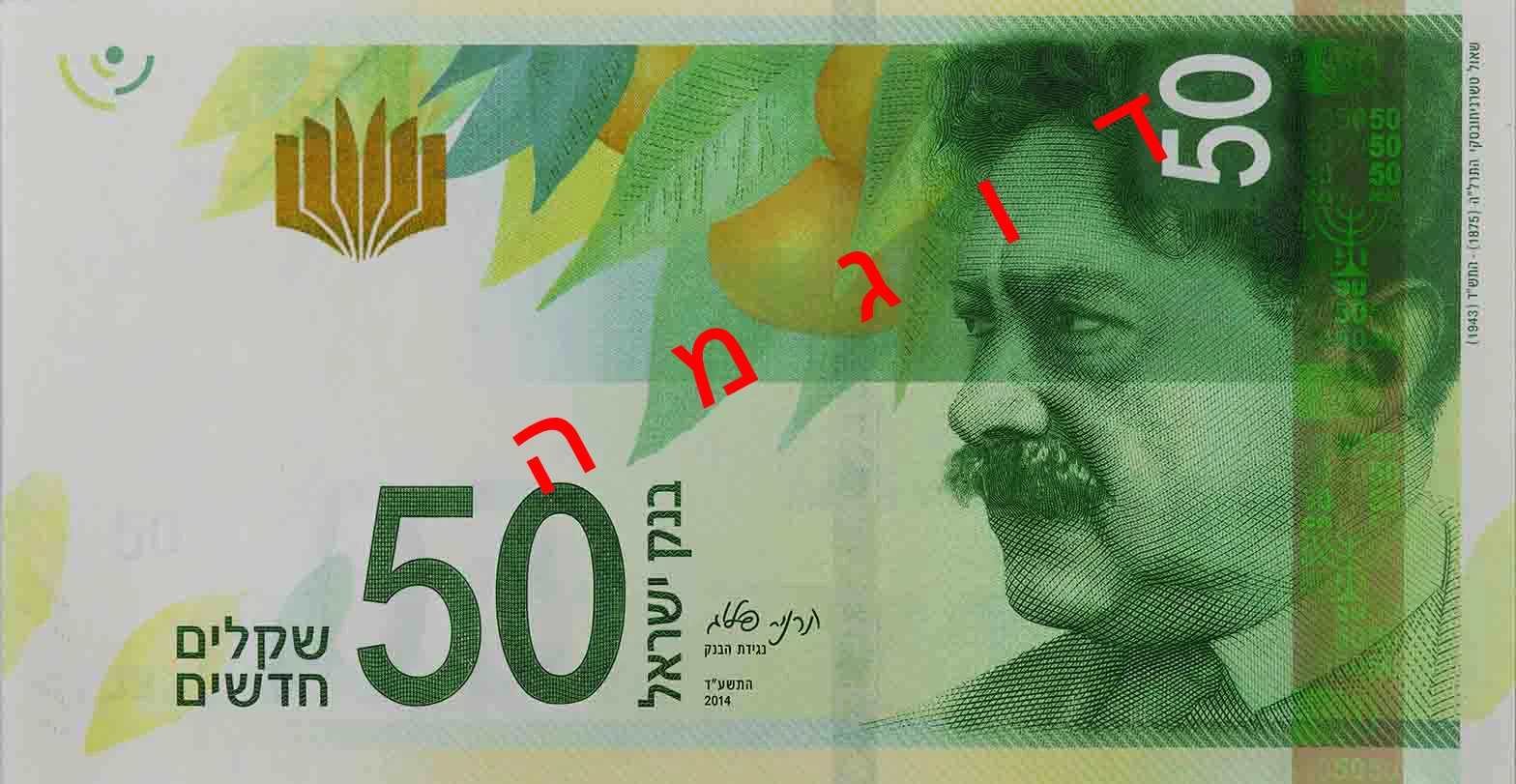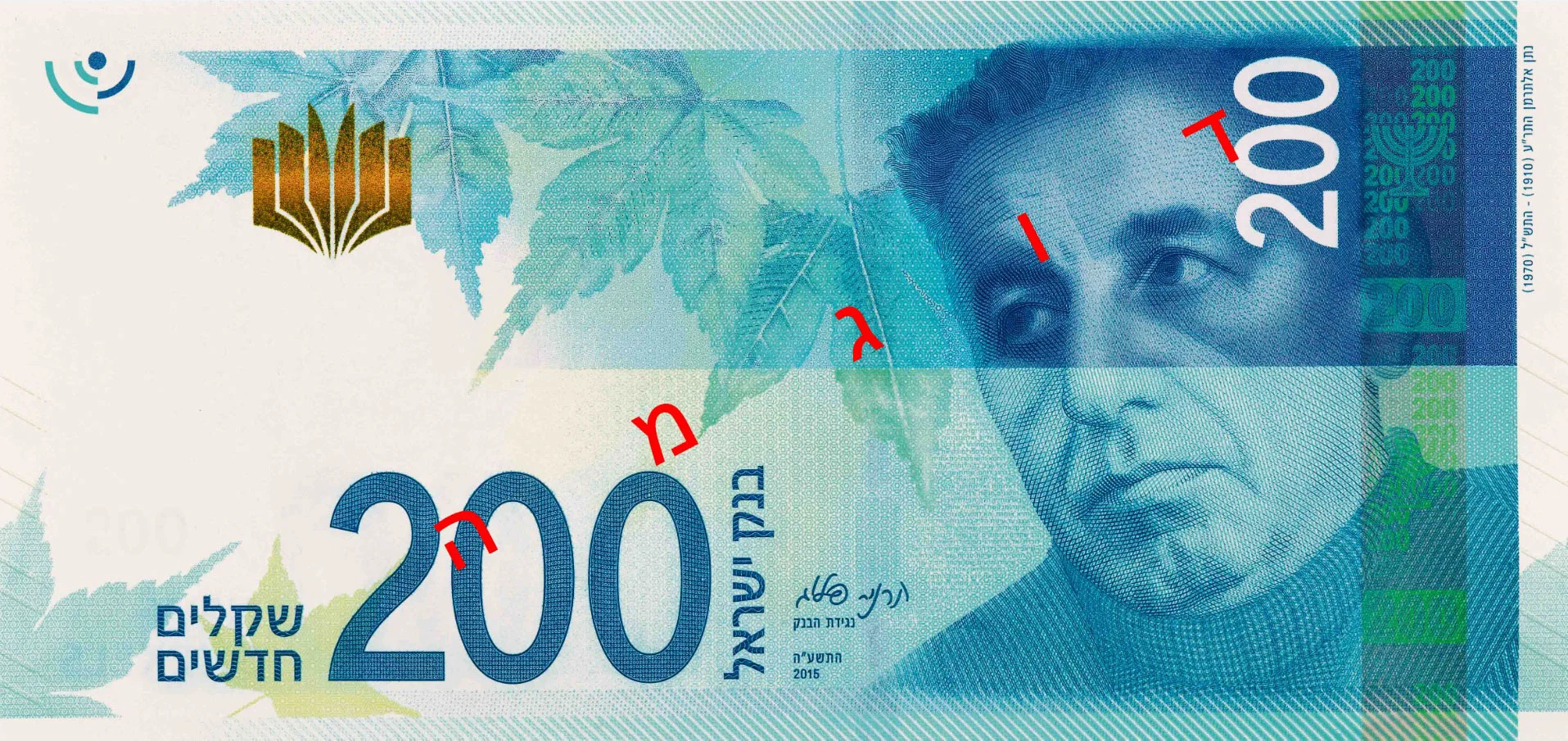
Currency manager: Bank of Israel
Israeli central bank is revolutionising management of country’s banknotes, while maintaining security

In October 2018, the Bank of Israel’s currency department received some welcome news: the country’s high court ruled that convicted counterfeiters had to pay it 400,000 shekels ($108,418) in damages for copyright infringement.
The ruling, the first of its kind in Israel, was a breakthrough.
“This is a relatively unconventional move,” says Ilan Steiner, head of the currency department at Bank of Israel. “The suit sends a clear and deterring message that, in addition to criminal law, counterfeiters will also face civil lawsuits for significant amounts.”
The lawsuit is the latest in a string of measures introduced by Steiner’s team to prevent the production of fake banknotes in the country.
“As well as the lawsuit, we have implemented an advanced counterfeit-management system and ramped up our engagement with relevant public parties. So we now provide training for law-enforcement staff, run a seminar for criminal law judges and speak regularly with Interpol,” he says.
Lean operations
The Bank of Israel’s cash-management operation is overseen by 30 staff, which is unusually lean when compared with the central banks of similarly sized economies. In comparison, the Netherlands Bank has a team of more than 100. Efficiency is embedded in the day-to-day operations of Israel’s central bank, the sole issuer of the country’s currency.

“Processes and operational regulations have been built to allow the currency department to gain effective control of the cash cycle with very limited resources,” says Steiner.
Technological innovation, including an automated cashier system, plays an essential role in enhancing efficiency, which has attracted the attention of other central banks. For example, a delegation from the Bank of Lithuania travelled to Israel in 2016, to learn how to streamline its own cash operations.
“The Bank of Israel is a leading central bank when it comes to cash management,” says Deivis Stankevičius, director of the Bank of Lithuania’s cash department. “We took a lot of examples from them, changed how we provided cash to banks and tweaked processes around cash handling.”
World-class series
The Bank of Israel’s currency team provides a regular supply of banknotes and coins in accordance with public demand. At the end of 2017, cash in circulation in Israel was worth 82 billion shekels – an increase of approximately 7% compared with the previous year.
The decision to move to a new banknote series, to serve the eight million people in Israel and those served under the Palestinian Monetary Authority, was taken in 2011. Four notable Hebrew poets were chosen to adorn the new series, which feature two women. The final designs were approved in 2013. The decision of which note to launch first then became the focus.
After analysing the cash-management risk, Bank of Israel chose to launch the 50-shekel note first, because it accounted for only 12% of the banknotes in circulation. In the event of a mishap, the public would not be affected severely, and the forgone cost of production would have been relatively mild, given the limited volume in circulation.
No major mishap took place during the launch in September 2014, so a year later, the 200-shekel was introduced. The final two denominations followed in September 2017.
We have implemented an advanced counterfeit-management system … We now provide training for law-enforcement staff, run a seminar for criminal law judges and speak regularly with Interpol
Ilan Steiner, Bank of Israel
“In all cases, samples of the new notes were distributed for the calibration and adjustment of automated machines about six months in advance, just to make sure the entry into circulation was as smooth as possible,” says Steiner.
In designing the new series, the Bank of Israel decided to incorporate the same security features in all of the denominations to facilitate public familiarity and ensure the series looks familial. Each banknote has intaglio print on both sides – not only for design purposes, but also with the intention of increasing overall durability and enhancing security.
The creation of the new series also presented the opportunity to introduce further improvements and initiatives. The Bank of Israel invested in modernising in-house operational systems, such as counting and sorting equipment, physical storage facilities, back-up sites, an innovative large-scale cashier system and an offline shredding process.
Likewise, in preparation for the new series, most of the commercial cash centres modernised and upgraded their own systems and facilities. The Bank of Israel also tightened its supervision of cash centres to make sure their facilities and procedures met all of the requirements defined by new designated regulations published in 2017. The central bank now requires cash centres to report on a monthly basis: the flow of the volume of cash, details of withdrawals and deposits, and details of any counterfeits that may be identified.
The new series also provided an opportunity to develop two new database systems in parallel: a serial numbers database for the new series of banknotes; and a counterfeit-monitoring system based on the experience of other central banks, such as the Bank of Canada, Netherlands Bank, European Central Bank and Reserve Bank of Australia.
Calculating the future
Since Steiner joined the currency department in 2016, his job has been dominated by the day-to-day operations of ensuring cash is safe, secure and available to everyone. But looming in the background was a bigger question, which all central banks are concerned about: what role should cash play in modern society?

To help understand this question, Steiner’s team launched the first international seminar on ‘data analytics in banknotes’ in partnership with the Netherlands Bank. The seminar, held in Jerusalem, established the infrastructure for cross-border dialogue and collaboration in data analytics based on serial-number reading.
Participants from 12 leading central banks and top-five technology companies presented their insights, and engaged in professional discussions during roundtables.
During the seminar, central banks were invited to visit the Bank of Israel’s cash centre in Jerusalem, where they could see in real time how data-information architecture and the standardisation of business information allows for a more streamlined cash-management strategy.
As Steiner says: “After the first day, it was clear central banks understood that banknote analytics would help better understand migration patterns, as well as supply chain efficiency and the quality of banknotes in circulation.”
The Central Banking Awards were written by Christopher Jeffery, Daniel Hinge, Dan Hardie, Rachael King, Victor Mendez-Barreira, Joel Clark, William Towning and Tristan Carlyle
Only users who have a paid subscription or are part of a corporate subscription are able to print or copy content.
To access these options, along with all other subscription benefits, please contact info@centralbanking.com or view our subscription options here: subscriptions.centralbanking.com/subscribe
You are currently unable to print this content. Please contact info@centralbanking.com to find out more.
You are currently unable to copy this content. Please contact info@centralbanking.com to find out more.
Copyright Infopro Digital Limited. All rights reserved.
As outlined in our terms and conditions, https://www.infopro-digital.com/terms-and-conditions/subscriptions/ (point 2.4), printing is limited to a single copy.
If you would like to purchase additional rights please email info@centralbanking.com test test test
Copyright Infopro Digital Limited. All rights reserved.
You may share this content using our article tools. As outlined in our terms and conditions, https://www.infopro-digital.com/terms-and-conditions/subscriptions/ (clause 2.4), an Authorised User may only make one copy of the materials for their own personal use. You must also comply with the restrictions in clause 2.5.
If you would like to purchase additional rights please email info@centralbanking.com test test test




